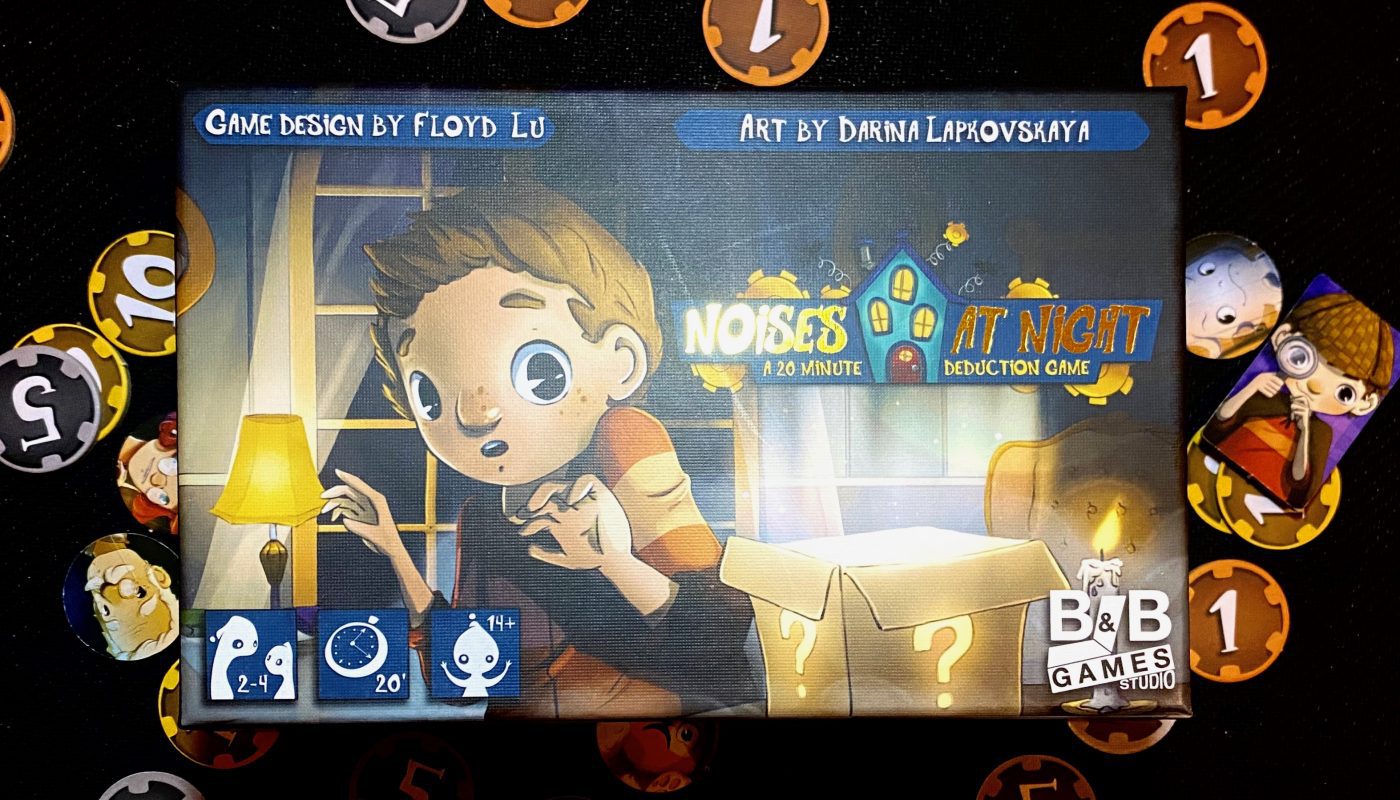A short disclaimer before you read my board game analysis
As an avid euro gamer and hardcore Legend of the Five Rings (L5R) LCG player, my reviews may reflect a preference for these styles, and I may not cover solo games/variants extensively. Please note that my personal remarks are based on my gaming experiences, and I aim to provide honest insights within the scope of my preferences.
Noises at Night might sound like a horror game but not this one. This game from B&B Games Studio is nowhere near the dreadful image. Yes, you’ll find Ghost and Boogeyman here but trust me, they’ll even make you laugh. Anyway, if you’re looking for terror, I think they release another title during Spiel Essen 2019 called The Refuge: Terror Below.
Coming back to Noises at Night now…
Noises at Night: An overview
Noises at Night is a secret identity, deduction card game designed by Floyd Lu. The comical and adorable illustration is the work of art by Darina Lapkovskaya. More details can be found in their BGG’s entry right here. The game will demand the players to be detectives. All of you will compete to investigate the culprit behind the murder noises at night across several rooms. It could be your family member, your cat pet, a sneaky mouse, or some cuddly ghost and boogeyman. Each player is dealt one out of those identities secretly. These characters have their own symbol shown on the cards.
Then, the five locations are positioned on the table; two characters will take place on a location except for the bathroom. Afterwards, each player gets four Clue cards; each card has four symbols. Anyway, Noises at Night is played over several rounds depending on the number of players. The rounds are marked with the timer. Each round consists of players’ turns as below.
Starting from the first player, each will lay two Clue cards on his/her turn, either face up or down in any location; this will trigger an action from the Clue card (if face up) and continued with the location’s triggered action. When all players have played their cards, then each will try to guess another player’s identity; guessing right will earn you points equal to the current rounds – guessing wrong then the points go to the other player. When the round ends, the first player is shifted to the next one and the round marker is moved on the timer.

A very important note: when your identity is guessed, you are not eliminated from the game. The game is continued as normal. The game ends when the timer reaches zero and all players reveal their identities. We calculate points based on the number of cards and symbols on the characters’ location also including the points gained from guessing other players’ identities. Whoever has the most points at the end of the game wins the game.
Our remarks
Noise at Nights is a very quick game. It is easy to play and this will be a very good filler. You can also pick this for a gaming session with your small cousins and siblings. This can be their very first gateway game. The artwork is cute! Perhaps it is meant to attract the younger audiences and to keep Noises at Night as family-friendly as possible.
Something else that is noteworthy is the player count. Many games in this category need a minimum of 3 players; but Floyd successfully designed this one to fit as a two-player-game. This one is another feat that I highly regard in a social deduction game, though. I would say, however, that you will enjoy playing this one with its full player count at 4 heads.
Noises at Night gave us a whole new sensation in the sense that it is being a social deduction game. While most of the similar games I have tried focus on eliminating players through guessing their role/identity (e.g. Love Letter, Spyfall), this game’s objective is to gain most points at the end of the game as its primary winning condition. Please let me know in the comment if you know some other social deduction games which take this direction as well! Nevertheless, it does not necessarily mean that this game is bad. It just feels different in comparison to the social deduction I usually know.
The lack of player elimination is actually a good thing, considering that this game is targeting younger kids and family. However, this does not penalise the players when they do something that’s pretty much obvious, e.g. laying too many Clue cards with symbols that give advantage to his/her identity. For the more mature gamers, this one will be a turn-off. When someone’s identity is guessed and revealed, Noises at Night will turn into something like a take-that game. You will just try to hinder this or that player to gain more points.
I would recommend redoing the rulebook. It feels a bit too messy and complicated for such a simple game. The FAQ can actually be fit in the rules explanation.
Final thoughts
Noises at Night is a fast-paced social deduction game which, in my point of view, is targeting players in the young-age group. The game is very simple and it is fit to be your filler. This game being a gateway game for the younger players does not really attract gamers who seek for something more challenging and more mature theme. If the rulebook is made more concise, it would be a better game.
I am a full-time food technologist during weekdays. However, when the calendar hits weekends, I transform into an avid board gamer. I am a hardcore Legend of the Five Rings (L5R) LCG player from Fantasy Flight Games (FFG). Current hobby: buying board games. My shelf of shame’s list is getting longer, thanks to you, Kickstarter.








